What is a Pilgrim Traveler?
The Pilgrim Traveler is not just about where you go, but how you go. It’s a philosophy and style of travel, not exactly ultralight backpacking, not exactly budget travel, but a thoughtful blend of the two.
We don’t camp in tents or haul sleeping bags. Instead, we stay in low-cost hostels or modest hotels. The goal isn’t suffering or chasing the cheapest option, it’s finding freedom by keeping things light, simple, and intentional.
- Ultralight means bringing only what you truly need.
- Minimalism is choosing multi-use items and keeping your kit simple and efficient.
- Frugality isn’t about being cheap, but about spending wisely, getting the most out of your money, your gear, and your opportunities.
Together, these three values form the heart of the Pilgrim Traveler philosophy: moving through the world lightly, ready for discovery, focused on the journey rather than the baggage.
My Journey
I have been traveling most of my life. My parents were foreign exchange teachers, and from an early age I was handed a backpack with a simple rule: whatever I could fit inside, I could take along.
Over the decades, I’ve wandered through Central America, Africa, Asia, and Europe, always refining my craft of traveling. For me, travel isn’t just movement; it’s a way of life.
Much of my travel connects to my work in TTRPG design and historical research. I spend my time in castles, battlefields, cathedrals, ruins, archaeological sites, and other places steeped in history.
Traveling, for me, is a lifestyle. The same philosophy applies whether I’m on a two-month journey across Europe or just a week-long trip. Friends often ask me how I travel and pack, and I’ve realized it isn’t simply about the gear, it’s about the mindset.
The Pilgrim Traveler Philosophy
- Light on the feet. Everything I carry fits in a small backpack.
- Ready for discovery. Travel is about experiences, not possessions.
- Focused on the journey. Freedom comes from simplicity.
Here is what I’ve learned.
The Backpack: A Pilgrim’s Home
For the Pilgrim Traveler, the backpack isn’t just gear, it’s your home. It gives you freedom. Unlike a rolling carry-on that ties you to dragging a bag on small wheels, a backpack lets you walk anywhere: cobblestone streets, muddy trails, crowded metros, or mountain paths.
Size Matters
I recommend a pack between 25L and 35L, depending on your size (this also keeps you in that precious carry-on limit). This is the sweet spot: big enough for everything you need, small enough to stay light. The key is fit, look for a pack with adjustable straps and proper support. If you can’t dial it in to your body, it’s not the right backpack.
Why not 50L or 60L? Simple: the bigger the bag, the more you’ll fill it. Large packs are for thru-hikers carrying tents, sleeping bags, and days of food. A pilgrim doesn’t need that weight.
Comfort First
Skip school-style backpacks or fashion travel bags. They’re fine for short hauls, but miserable after an hour. Instead, choose a proper hiking backpack with real shoulder, chest, and hip support. You’ll be carrying it for miles, comfort is essential.
Access & Pockets
Good design saves frustration. Look for:
- Top roll or zipper openings, a large side zip for full access is a bonus (this is hard to find, but a bonus).
- A front mesh pocket for wet gear or quick stashes (jacket, towel, fruit).
- Two deep side pockets that actually fit water bottles.
- At least one small outside pocket and one inside pocket for easy access to essentials.
Max Load: The Weight of Freedom
It takes time and practice, but getting your pack under 15 lbs (7 kg) is absolutely doable. My girlfriend’s pack is under 12 lbs (5 kg), and if I left my laptop behind, I’d be in that same range.
The goal is simple: you want your backpack to fade away as you walk.
Every step you take with less weight saves your back, your knees, and your feet. It keeps you looking up and around, at the mountains, the scenery, the people, instead of down at the ground, struggling with your load.
Lightweight travel isn’t just about saving money or moving faster. It’s about caring for your body, protecting your health, and improving your mood.
The lighter you travel, the more you can enjoy the journey.
My Backpack Journey
My current pack is a Marmot Kompressor Verve 32L. I’ve had it since 2014, nearly ten years. It’s been with me up Kilimanjaro, across Europe, Central and South America, and Asia. Sadly, Marmot no longer makes it, but it’s still going strong. If I could find one, I would buy another, but they are discontinued.
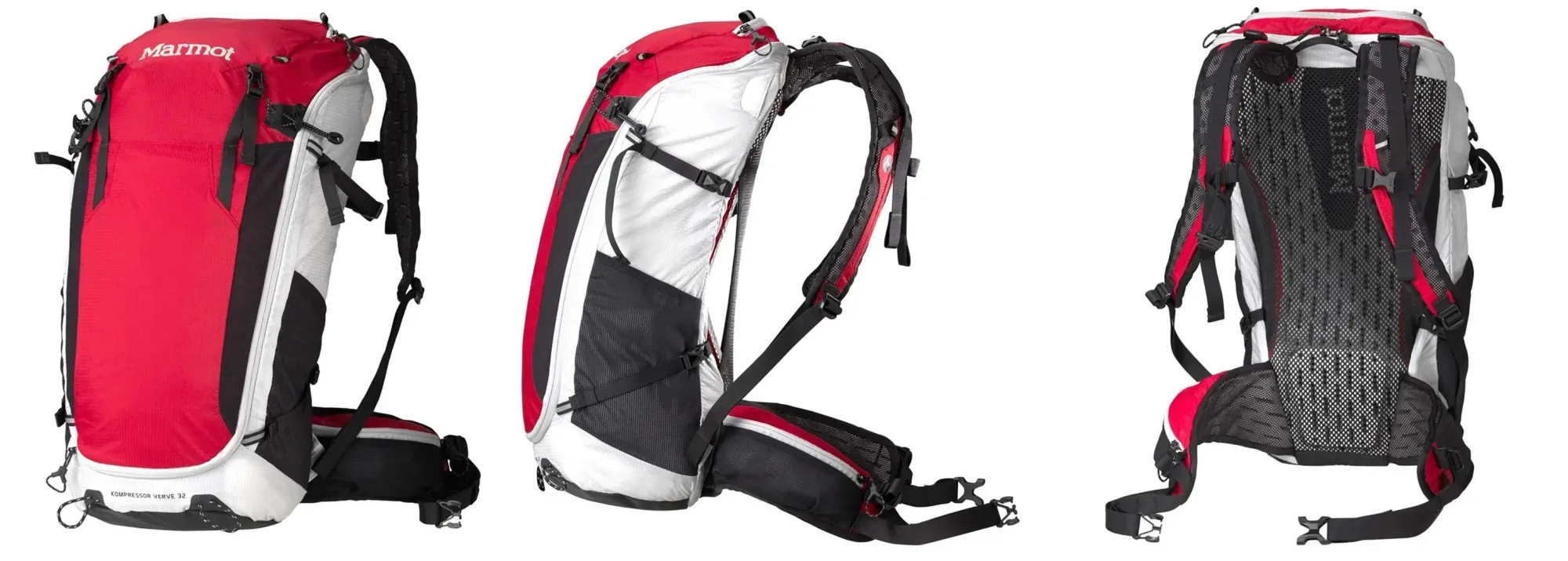
If I had to replace it, I’d look at the Mammut Ducan Spine 28–35L ,the Ducan 26L , or even the Ducan 22L if you can go that small (about € 150-200). Both are excellent designs, very similar to my Marmot.
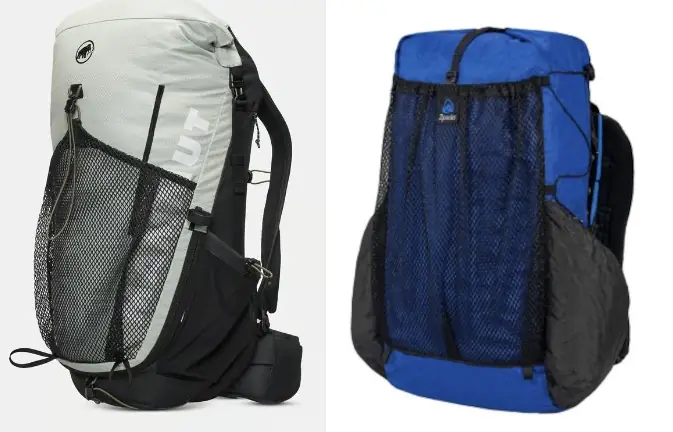
For ultralight fans, there’s the Zpacks Bagger Ultra 25L or the Sub-Nero Ultra 30L (around € 200-250). I use a Zpacks Arc Haul 50L for camping, it’s phenomenal, but far too large for pilgrim travel. If you have the extra money, check out the Sub-Nero Ultra 30L.
Invest Once, Carry Forever
A good backpack is frugal: it will serve you for a decade or more. The upfront cost saves money in the long run, and, more importantly, saves your back and feet.
And don’t forget: a rain cover is non-negotiable.
A Pilgrim’s Shoes
If the backpack is a pilgrim’s home, the shoes are the foundation. And for long-distance travel, there’s only one type I recommend: trail runners.
Trail runners are designed for walking and hiking. They’re built for comfort over long distances, with good grip and cushioning that work across dirt, gravel, cobblestones, or city streets. Unlike heavy hiking boots, they stay light, breathable, and versatile.
Choosing the Right Pair
There’s no “magic shoe.” Everyone’s feet are different, so what works for me may not work for you. My personal favorite is the Altra Lone Peak, but that’s just one option among dozens.
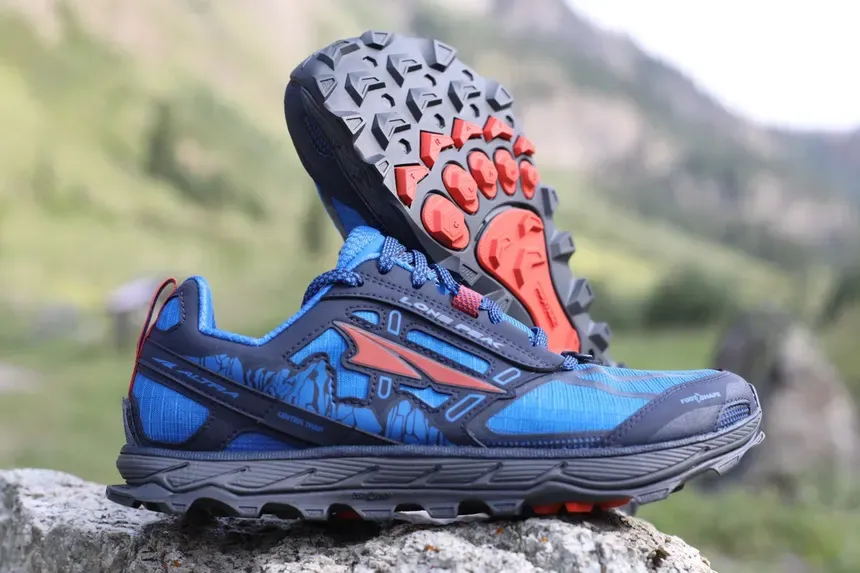
Key things to consider:
- Fit (toe box width): Wide or narrow, depending on your feet. I prefer wide.
- Drop (heel-to-toe elevation): Altra Lone Peaks have zero drop (flat). Others offer a 2–4mm pitch or more. There’s no right or wrong, just what feels best.
- Try before you buy: Go to a store and try on as many pairs as possible. Ignore the look and focus on the fit and feel.
Practical Tips
- Foot swelling: If you’re not used to long walks, expect your feet to swell. Try shoes with thicker socks or double socks when testing. Hikers already know their fit, but it’s worth emphasizing.
- Waterproof or not? In hot weather (spring/summer), I avoid Gore-Tex or waterproofing makes shoes hot and slow to dry if water gets in. For fall/winter, wet climates, or snow, waterproof shoes can be worth it.
Socks Matter
Only one rule here: merino wool.
- Stays warm even when wet.
- Resists bacteria and odor.
- Dries faster than cotton.
A merino/polyester blend is a fine second choice. But avoid cotton, it is slow drying, smelly, and miserable when wet.
Care for Your Feet
- Use a good foot cream (bonus if it smells nice). It smooths skin, prevents odor, and feels great after a long day.
- Air your feet often.
- Clip your nails regularly, especially your big toenails. I’ve lost enough to know better.
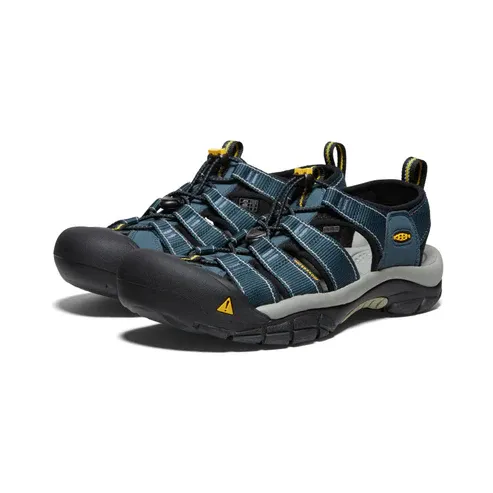
Sandals as an additional Option
In warm weather, consider a pair of Tevas or Keen sandals. They give your feet sun, air, and rest. You can hike with them, even under load. I’ve done months with sandals and a backpack. Personally, I prefer Keens because they protect my toes. I’ve broken enough of them to be cautious, I’m toe-clumsy, so I guard them well.
Clothing: The Pilgrim’s Wardrobe
Rule One: No Cotton.
As much as I love soft cotton sheets, cotton is a pilgrim traveler’s nightmare. It dries slowly, provides no warmth when wet, and traps bacteria. Leave it at home.
The real secret to travel clothing is layering. Nothing bulky. If it gets cold, add a layer; if it gets hot, take one off.
All my clothes I can and often handwash and hang dry without issue.
Shirts
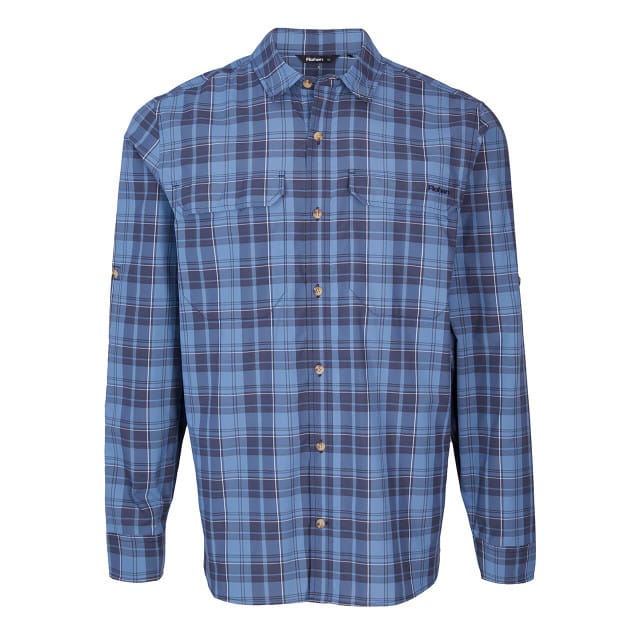
I swear by my Rohan button-ups. They look like cotton, but are not. They are quick-dry, wrinkle-free, UV protection and built to last. Mine are over 10 years old and still holding up. They even use silver-thread tech to fight bacteria and come with hidden pockets. Pricey, but worth it (I buy them on sale). I usually carry 2 rolled shirts and wear one.
T-Shirts
Merino wool only. Soft like cotton, but dries faster, keeps you warm even when wet, and doesn’t stink. Decathlon sells a solid merino tee for €19 on sale (€29 regular). I carry two.
Shorts
Synthetic, quick-dry, lightweight. Plenty of options, just avoid cotton. I always pack two pairs.
Pants
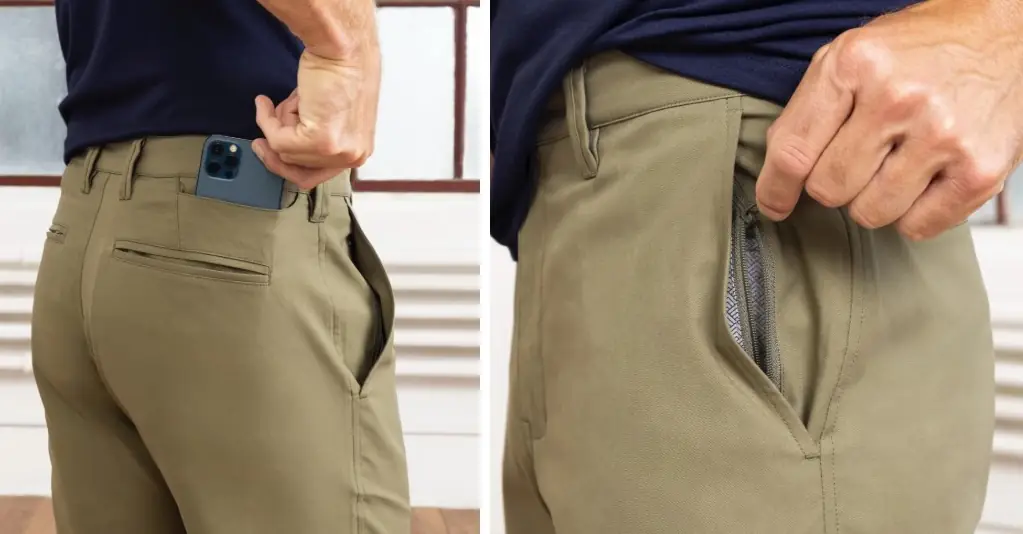
For me, it’s Bluffworks or nothing. The Ascender Chinos are the ultimate travel pants: zipper pockets, smart-phone pocket, quick-dry, no ironing, look sharp, and last forever. I own multiple colors and have worn them for a decade. They’re not cheap, but they’re an investment, I haven’t bought new ones in 5+ years. I pack one and wear one.
Socks
Already covered in the shoes section: merino wool only.
Underwear
I use SAXX compression underwear (short or mid-thigh). Synthetic, snug, breathable, fast-drying, and odor-resistant. They double as swimwear in a pinch and are modest enough for mixed hostel dorms.
Jackets & Layers
Rain Shell
Sometimes there are referred to as "hard shells". This is one of your most important investments. A proper rain shell protects against wind and rain, but also needs:
- Taped seams and water-resistant zippers
- Pit zips for ventilation (you’ll overheat otherwise)
- A proper hood
- Room for wearing a puffy and/or fleece underneath.
Buy quality, it lasts. My Marmot Men’s Seeker is over 10 years old, still works perfectly, and shows no sign of slowing down. Back then it cost me more than €250, but it’s proven well worth it. Expect to pay €250 - €450 for a quality shell, it will last you at least a decade if not more.
Puffy
I prefer down puffies, lightweight, warm, and compressible. Mine stuffs into its own pocket and disappears in my bag until needed. Perfect warmth-to-weight ratio.
Fleece
I like a fleece vest for layering. Keeps my core warm without restricting my arms, especially when combined with a puffy or shell. If you carry a puffy, a vest may be all you need.
Packing & Storage
All my clothing (except jackets) fits into a Z-pack Medium-Plus Pillow Dry Bag. This bag doubles as a soft dry sack and a pillow (it has a fleece liner you can turn inside out). One of my favorite little pieces of gear.
Clothing List (all fits in the dry bag):
- 2 shirts (plus one worn)
- 2 t-shirts
- 2 pair of merino socks (plus one worn)
- 1 pant (plus one worn)
- 2 shorts
- 1 swimsuit
- 2 pairs of SAXX underwear (plus one worn)
Smart Phone: The Pilgrim’s Toolkit
Your smartphone is your primary piece of electronics when traveling. It’s your map, your translator, your ticket office, your bank, and your connection to the world. Used wisely, it makes travel lighter and simpler.
eSIM
For world travelers, this is essential. An eSIM phone lets you switch instantly to a local service in any country; buying short-term data, calls, or text packages on the fly. No more roaming charges, no fiddling with tiny SIM trays, no searching for a kiosk. Just tap, activate, and you’re connected.
Almost every major manufacturer now includes eSIM (Pixel, iPhone, Samsung, Oppo, Redmi, Realme, etc.), and you can find capable models under €200 if you shop around.
Essential Apps
- Free WiFi Map
Shows nearby free Wi-Fi spots, plus extras like public toilets and water fountains. Some entries even include passwords. I once lived 30 days in a city using only free Wi-Fi through this app. Premium offers auto-connect and more locations, but the free version is solid. - Offline Maps
Download maps before you go. Losing connection in a remote area or in the middle of a glitch can leave you stranded. Google Maps and many others allow free offline downloads, it’s a lifesaver. - Translator Apps
I keep two installed. Look for one with photo translation, perfect for menus, signs, or ingredient lists. It saves you from having to ask every time. - Travel Pass Apps
Many cities now use app-based bus, tram, and metro passes. Often cheaper than paying trip by trip. Check before you arrive, it might save you money. - Geocaching
A great way to explore off the beaten path. Geocaching often leads you to unusual corners of towns and villages that most tourists never see. It’s like a treasure hunt woven into your walk. - Transport Apps
BlaBlaCar, Uber, Lyft, Bolt, and others are worth having installed, even if you only use them occasionally. They’re often cheaper or more flexible than local taxis. - Phone Pay
Depending on your bank, mobile payments (MB WAY, Revolut, etc.) can be convenient and often offer better exchange rates. I use these regularly, they’re faster, safer, and usually cheaper than cash exchanges.
Toiletries & Accessories: The Fun Part
Rule One: Keep it simple, stupid.
Everything I carry fits in a very small toiletry kit. You don’t need to haul a bathroom cabinet on your back, just the essentials:
- Toothbrush & small toothpaste
- Small hairbrush or comb
- Small shampoo bottle (reuse one and refill as you go)
- Small roll-on deodorant
- SPF 30 face cream
- Razor
- Foot cream
- Nail clippers
- Small Swiss Army knife (with a blade, tweezers, etc.)
- Tiny sewing kit
- Mini pill bottle with Advil / Ibuprofen / Aspirin
- Blistex & chapstick
- Blister pads & band-aids
- A few small packs of wet wipes
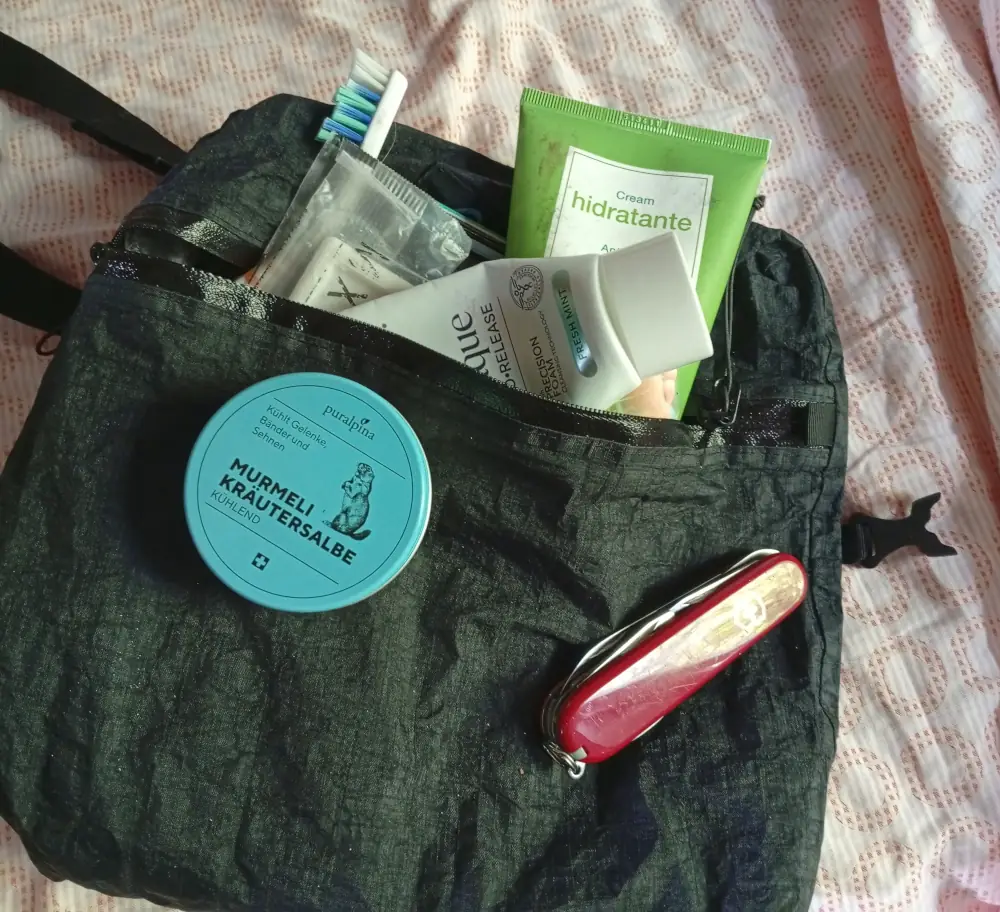
Quick-Dry Towel
One of the simplest, most useful items you can carry is a quick-dry towel. They come in various sizes, weigh almost nothing, and dry in hours. Perfect for hostels, rivers, or even an impromptu picnic blanket.
Douglas Adams said it best in The Hitchhiker’s Guide to the Galaxy:
“A towel, it says, is about the most massively useful thing an interstellar hitchhiker can have... More importantly, a towel has immense psychological value.”
It’s true. A quick-dry towel isn’t just useful, it’s a symbol of being ready for anything. Whether you’re drying off after a swim, using it as a blanket on a train, or improvising a picnic mat in the park, your towel is your faithful companion.
So remember: a Pilgrim Traveler never leaves without a towel.
A Pilgrim’s Philosophy on Toiletries
- Refill on the road. You’re rarely in the middle of nowhere, stores, pharmacies, and even hostels usually have what you need.
- Use what’s free. Many hotels and hostels provide soap or shampoo. Refill your travel bottles instead of buying new ones, saves money and reduces waste. My girlfriend has mastered this and has enough bath oils and lotions for a lifetime.
- Travel light. Don’t overpack “just in case.” Toiletries are easy to replace anywhere in the world.
Other Electronics: Living Light in a Wired World
We live in an electronic age and as much as I’d love to pretend otherwise, electronics are now part of the pilgrim traveler’s toolkit. The key is keeping them light, essential, and purposeful.
Power & Cables
- Battery Pack – I use the Anker Nano Power Bank 10,000mAh with built-in USB-C and 30W PD fast charging. It’s slim, reliable, and charges my phone multiple times.
- Cables – Always carry at least two USB cables. They fail, they get lost, and having a spare will save you.
- Universal Adapter – The TESSAN Universal Travel Adapter is a lifesaver. It works worldwide and includes USB ports. One adapter = everywhere covered.
Laptop & Accessories
Not everyone travels with a laptop, but I do. My Dell XPS 13 (third one in 20 years) is compact, powerful (64GB RAM), and perfect for work on the road.
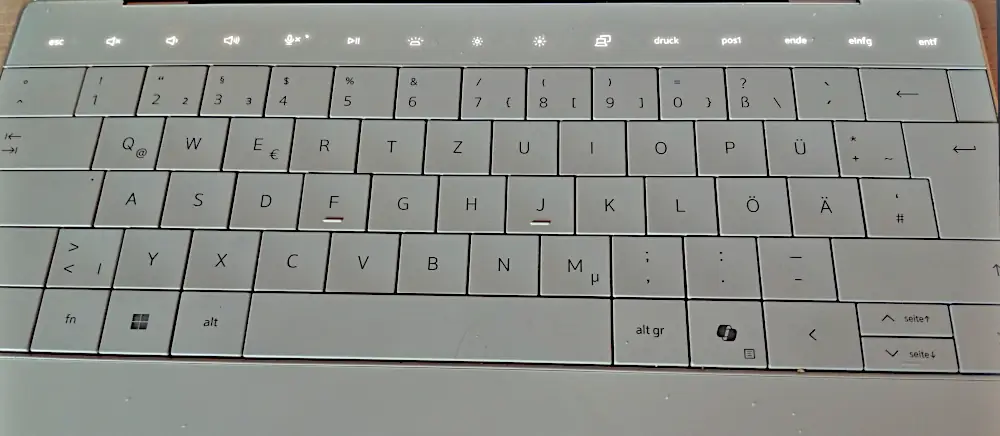
- Side note: I accidentally ordered the German keyboard version. Didn’t notice until later, but since I touch-type it didn’t matter. Still, it’s funny when people assume I’m German because of it.
Accessories I always carry:
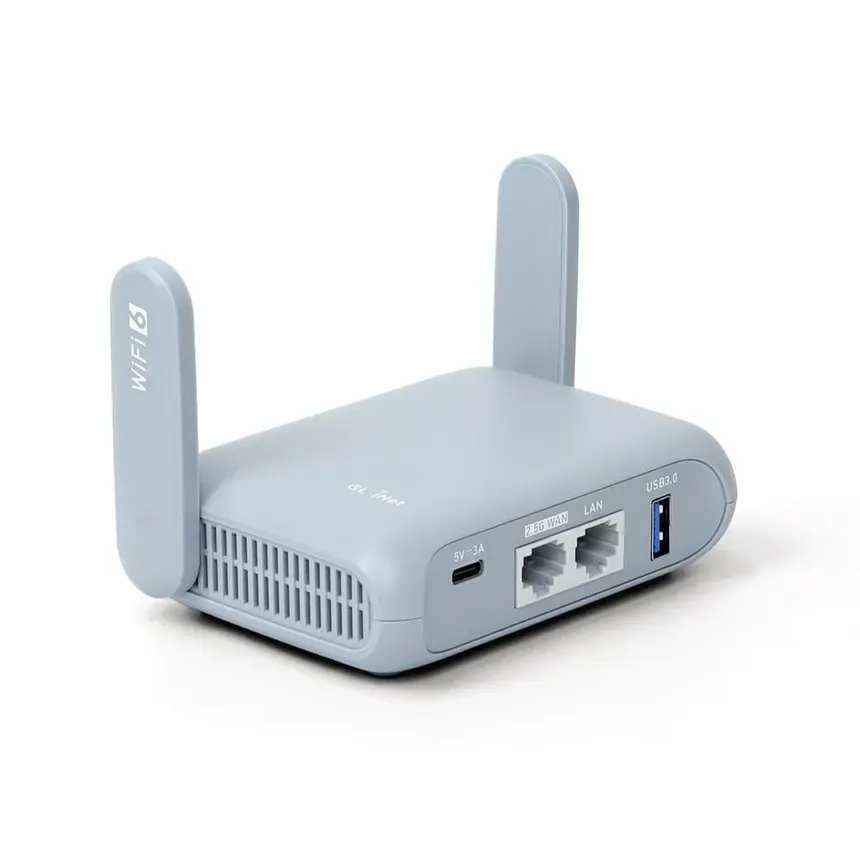
GL.iNet GL-MT3000 (Beryl AX) Portable WiFi 6 Router – My secret weapon. It acts as a router, WiFi extender, and VPN hub for all my devices. In weak-signal hostels or cafés, it boosts WiFi dramatically. Everything connects through it, making life simple and secure.
- Micro SD Card Reader & Cards – For my camera and drone. I keep them in a small card holder.
- Flash Drive – Quick backups when needed.
eReader
I read every day. To save my phone’s battery and my eyes, I use the BOOX Palma 2, a smartphone-sized eReader with backlight for night, glare-free screen for sun, and incredible battery life. For readers, it’s worth its weight in gold.
Camera Gear
Once upon a time, I carried my Fujifilm X-Pro3 everywhere. It’s a fantastic camera, but paired with lenses it became too heavy for my style of travel.
Now, my go-to kit is:
- DJI Pocket 3 – Lightweight, stabilized, perfect for both video and stills. It goes everywhere with me.
- Neo Drone – For aerial shots and unique perspectives.
The Fuji still comes out for special trips, but most of the time the Pocket 3 + drone combo gives me what I need without the weight.
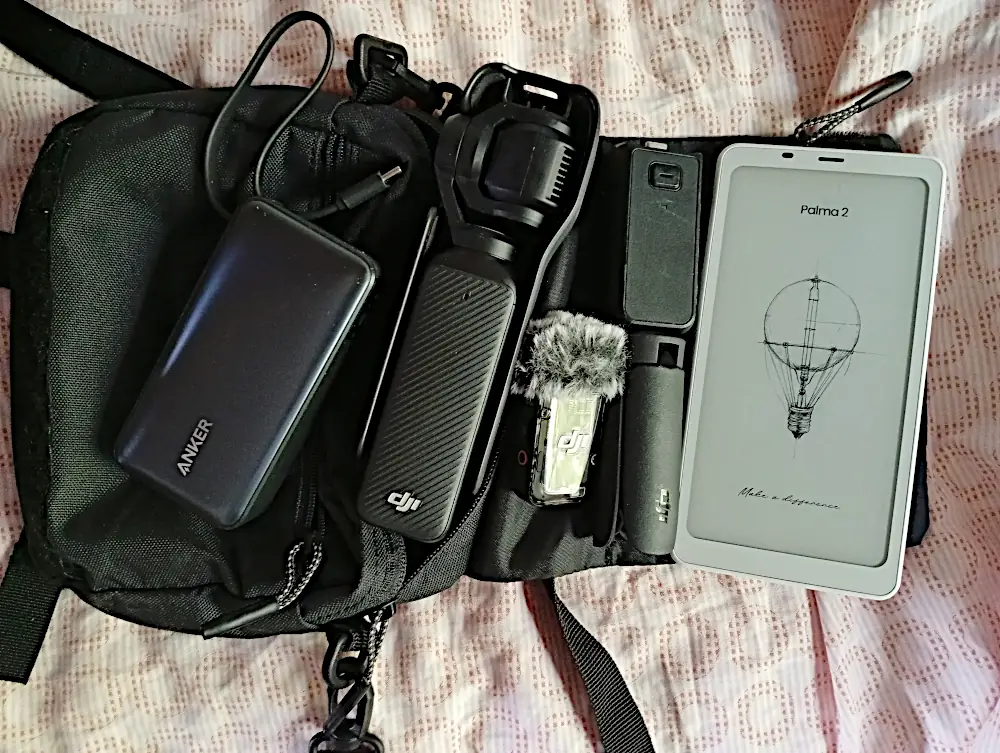
A Final Note on Packing
All of this; my laptop, electronic gear, WiFi router, eReader, and DJI Pocket 3, fits inside my Marmot 32L backpack, along with clothing and essentials. That’s the beauty of keeping things minimal and intentional: one bag, everything I need.
To keep things organized and protected, I use a small waterproof bag for my electronics, and a compact shoulder pouch for quick access to my DJI Pocket 3 and battery charger when I’m out exploring.
I haven’t tried packing my Neo Drone in it yet, but I’m fairly certain it would fit in the outside pocket if I needed it to.
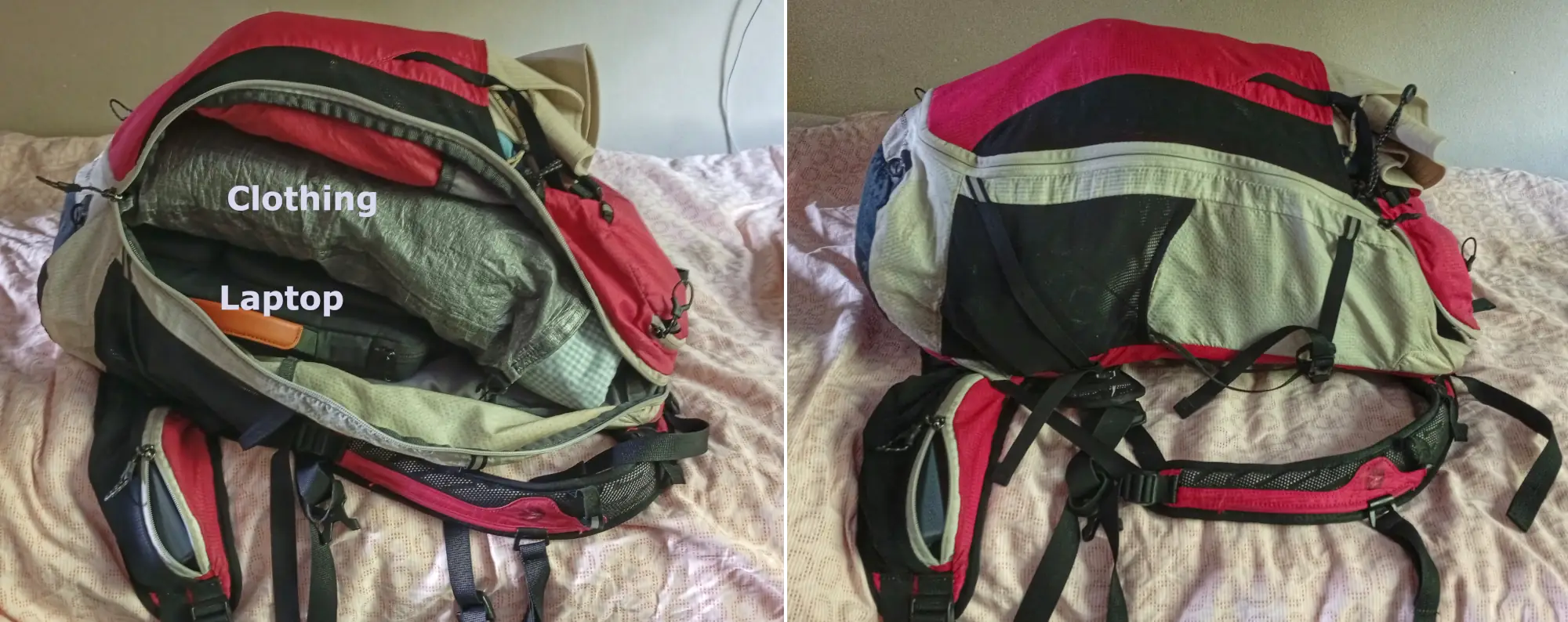
Saving Money Tips
Traveling light is only part of the pilgrim philosophy, traveling frugally is just as important. With a few simple habits, you can save €150–200 every week.
Hostel Discounts
Many hostels belong to networks. Membership often means 10% off stays plus extras like museum passes, bike rentals, or even free public transport.
- Example: Swiss Youth Hostels give 10% off, plus a free daily Swiss Travel Pass code for buses and trains.
- Savings: ~€35/week.
Free Breakfast = Free Lunch
If your hostel or hotel includes breakfast, it usually means free lunch too. Make a sandwich, grab a boiled egg, take some fruit, it’s your midday meal. My girlfriend makes the best free sandwiches, now I am addicted.
- In Switzerland, I lived for 30+ days without ever buying lunch.
- Lunch in Europe = €15–20.
- Savings: ~€105/week.
Free Tea
Hostels, hotels, even restaurants often have free teabags. Take a couple with you, just add hot water, and you’ve got a drink. I have two mason jars at home filled with teas from all over the world. My girlfriend is the tea-thief.
- Tea costs €1.5–3.
- Savings: ~€10/week.
Free Condiments
Don’t ignore those little packets: marmalade, Nutella, pâté, fish spread, cheese. Grab a baguette, and you’ve got a meal.
- Buying these in a store can cost €2–5 each.
- Savings: ~€10/week.
Free Water
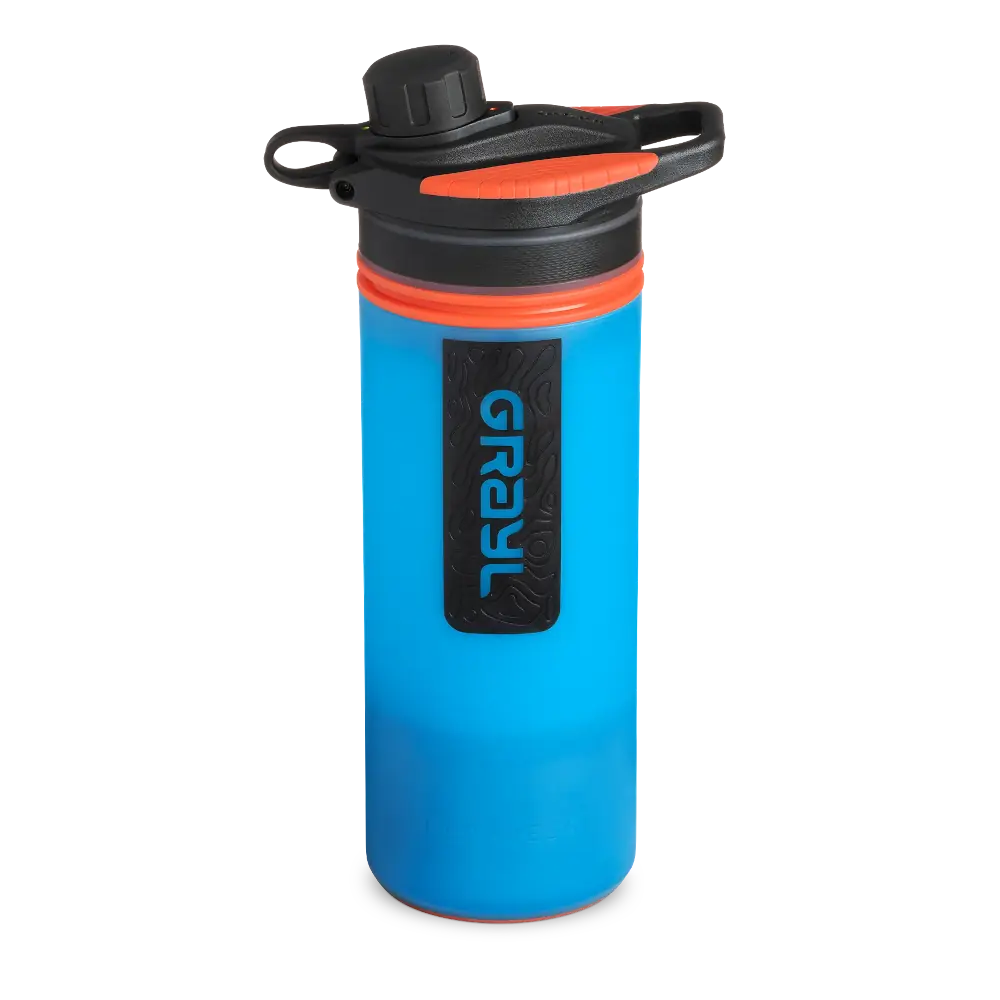
Never buy bottled water. I use a Grayl Geopress 700ml filter bottle, which lets me drink safely from rivers, taps, or fountains. It’s built like a tank and rides in my backpack side pocket.
- Bottled water = €2–3/day.
- Savings: ~€10–15/week.
Laundry
Hand-wash your clothes. If you follow my clothing system, everything dries in 12 hours. Wash in the morning, wear it the next day.
- Coin laundry = €7–10 per load.
- Hostel service = €12–20.
- Savings: ~€15/week.
Free Public Transport
Some hostels (like in Switzerland) give free local transport passes (Swiss Pass) with your stay.
- Savings: ~€35/week.
Weekly Savings Breakdown
| Tip | Daily Save (€) | Weekly Save (€) |
|---|---|---|
| Hostel Discount | 5 | 35 |
| Free Lunch | 15 | 105 |
| Free Tea | 1.5 | 10.5 |
| Free Water | 1.5 | 10.5 |
| Weekly Laundry | — | 15 |
| Condiments | 1.5 | 10.5 |
| Free Public Transport | 5 | 35 |
| Total | 186.5 |
That’s nearly €200 a week, which could be a flight, an extra week of travel, or even seed money for your next adventure.
Actual Costs
I spent 32 days traveling across Spain in June and July. My total expense, including; hotels, hostels, food, drinks, and transport (bus/train), came to about €1,650, which averages €52/day.
Some days were higher (nice meals, longer train rides), some lower (hostels with breakfast + lunch included), but overall it shows how affordable slow travel can be with a pilgrim mindset.
Looking back, I believe I could have cut this down to €1,250–1,300 total, or about €40/day, by applying my own methods more consistently:
- Taking greater advantage of hostel discounts and pre-season prices
- Leaning more on free breakfasts for lunch
- Choosing more low-tourist towns instead of major cities every stop
- Hand-washing clothes more regularly instead of using hostel laundry
Even in peak summer, Spain was affordable with the right approach. With pilgrim travel habits, that daily cost could easily stretch a trip longer or free up money for those occasional luxuries that make a journey memorable.
Pre-Season Travel: A Pilgrim’s Secret
One of my favorite tips is to travel in the pre-season.
For example, I went to Sardinia in May, almost no tourists. Hotels were half price or better. I stayed in a room for €60/night that normally costs over €200 in high season.
In the pre-season, places are preparing for the rush. Staff are fresh, friendly, and excited. Service is often better than at peak times, when they’re overwhelmed or worn out. Parking is easy, crowds are gone, and prices across the board are lower.
I personally prefer pre-season over off-season. By the end of the season, staff are tired, properties can look worn, and energy is low. But in pre-season (April–May in much of Europe), you’ll find happy earger hosts, clean locations, and calm streets.
Avoiding Tourist Traps
Of course, some tourist sites are worth it: the Great Pyramids, the Eiffel Tower, Big Ben. But you don’t need to spend your whole journey in the middle of crowds.
Most countries are filled with hidden gems, places with rich history, local food, and lower prices, but without mass tourism.
- In Spain, instead of just Barcelona or Madrid, I recommend:
- Ávila – a fully walled medieval city.
- Mérida – Roman ruins as good as anywhere in Europe.
- Trujillo – a stunning medieval town and fortress.
Hotels in these cities often run €30–50 a night, meals are authentic and affordable, and the experience feels more personal. Every country has these places, it just takes a little research to find them.
Conclusion
Being a Pilgrim Traveler means moving through the world with a lighter step. It’s about freedom, the ability to move quickly, carry only what you need, and live with less weight on your back and mind. It’s also about balance: saving money through simplicity so you can occasionally enjoy something special; a good meal and wine, a spa day, or even extending your journey a little longer.
There is no single “right way” to travel. But by following this philosophy, you’ll often find you have more money, more time, and far fewer worries. That space, financial, physical, and mental, lets you focus on what really matters: experiencing the journey.
Travel light. Travel wise. Travel as a pilgrim.
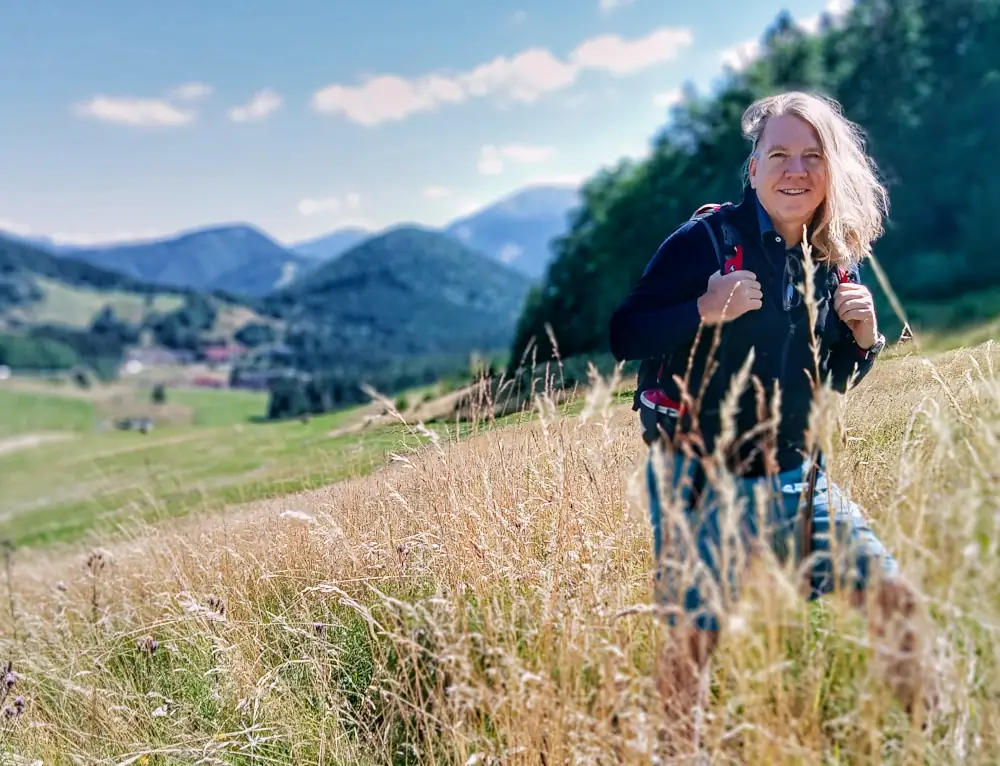

Member discussion: